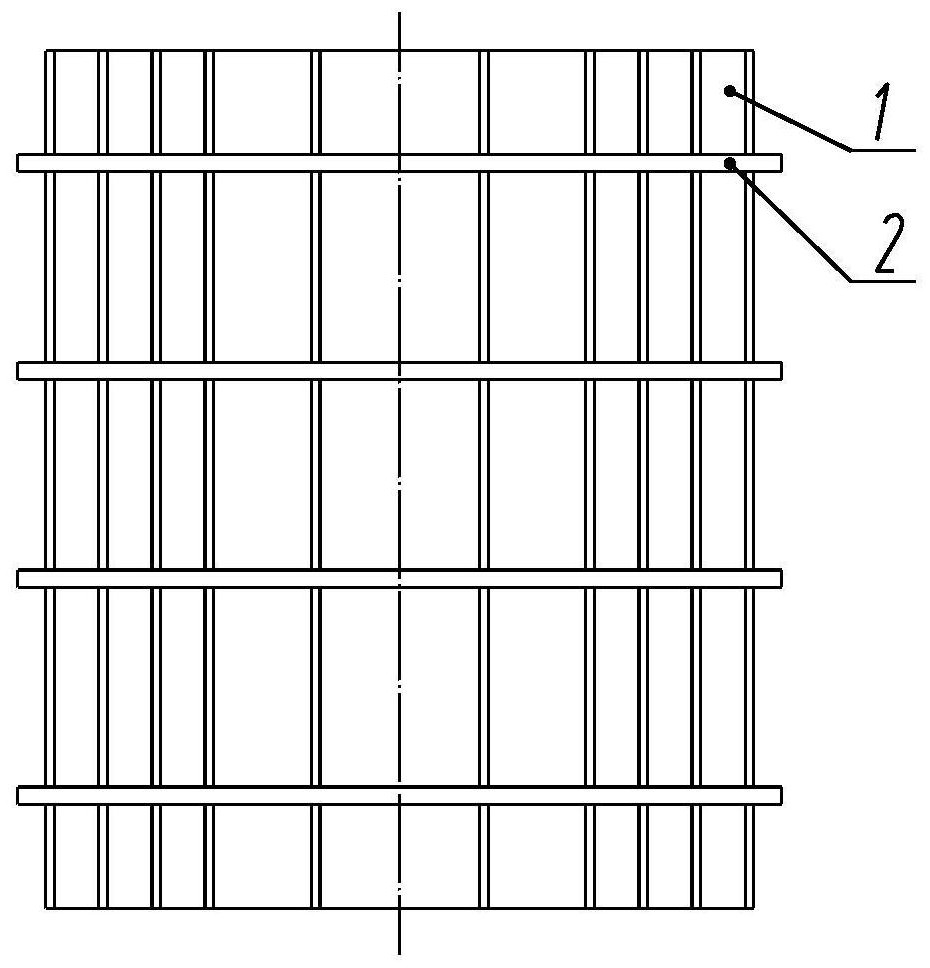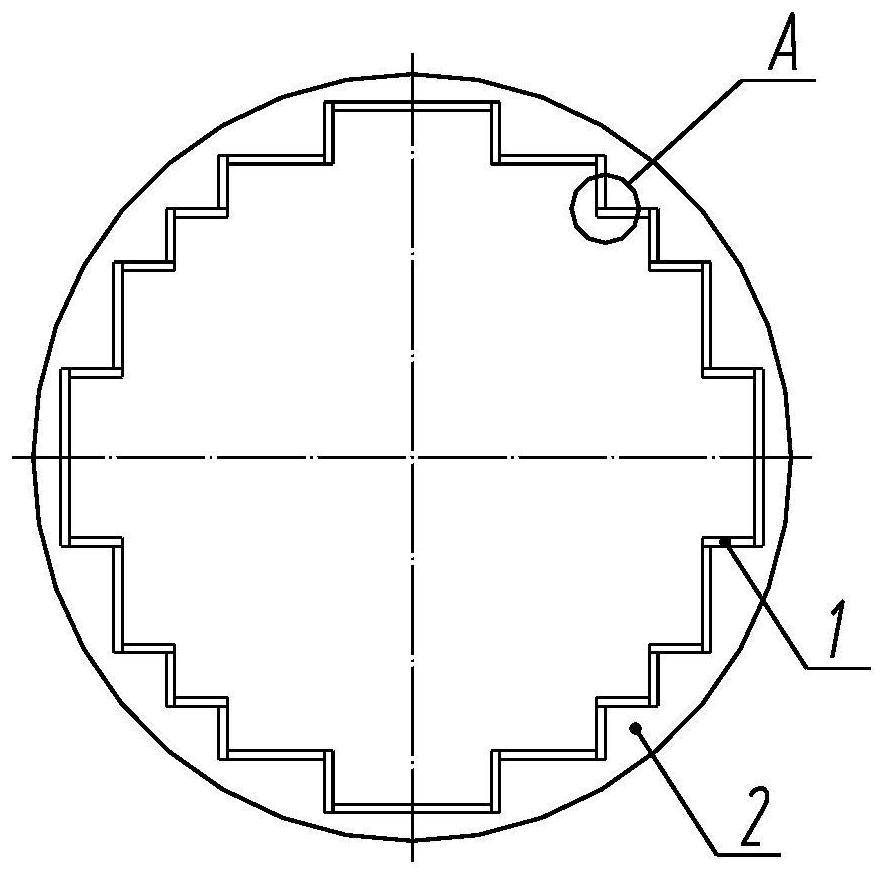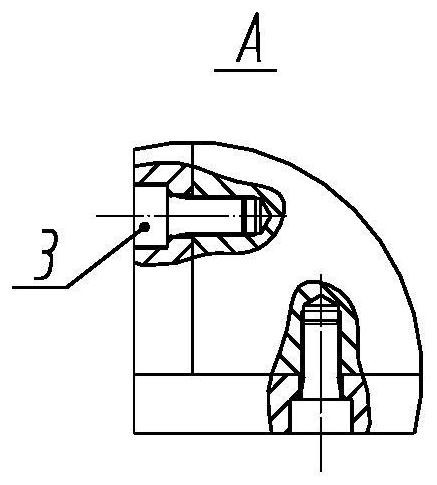A method for forming integral reflective layer of stack internal components
An integrally formed and integrated technology, applied in the fields of reactors, greenhouse gas reduction, climate sustainability, etc., can solve the problems of complex structure, large welding deformation, large processing volume, etc.
- Summary
- Abstract
- Description
- Claims
- Application Information
AI Technical Summary
Problems solved by technology
Method used
Image
Examples
Embodiment 1
[0035] Such as Figure 1~5 As shown, this embodiment includes the following steps:
[0036] 1) Select the raw material of the integral reflective layer manufactured by laser melting and additive manufacturing;
[0037] 2) Write the additive manufacturing program according to the size of the integral reflective layer;
[0038] 3) Surface treatment of substrates for additives;
[0039] 4) Using a laser as a heat source, the additive raw materials are melted and deposited layer by layer on the substrate by a powder feeding melting method to form an integrally formed shroud 6, an integrally formed ring plate 7, and an integrally formed rib plate 5, so as to realize integral reflective layer forming;
[0040] 5) Carrying out solid solution heat treatment to the integral reflective layer;
[0041] 6) Dimensional stabilization of the integral reflective layer;
[0042] 7) Liquid penetrant inspection of the integral reflective layer;
[0043] 8) Ultrasonic inspection of the integ...
Embodiment 2
[0047] Such as Figure 5 As shown, this embodiment is based on the embodiment 1. In the step 4), the laser power in the powder feeding and melting method is 100-4000W, the melting speed is 50-200g / h, and the thickness of the single layer is 0.1-1mm between until the dimensions required for additive manufacturing are completed. Furthermore, the raw materials are deposited layer by layer on the substrate by powder feeding and melting, and the laser power is set at 100-3000W during the forming process of the integral reflective layer, so that the melting speed of the raw materials is 50-100g / h, and at the same time Ensure that the thickness of a single layer of raw materials is kept in the range of 0.1-1 mm, so that the performance of the final integrated reflective layer and chrome-plated layer can be optimized.
[0048] In the step 5), the process of solid solution heat treatment is as follows: place the integral reflective layer in a heat treatment furnace, heat it to 1000-11...
Embodiment 3
[0051] Such as Figure 5 As shown, this embodiment is based on embodiments 1 and 2. In the step 6), the flow process of the dimensional stabilization treatment is as follows: place the integrated reflective layer of the reactor internals in a heat treatment furnace and heat to 400 ~450℃, heating time is 6~8h, so that the internal stress caused by machining in the integrated reflective layer of the reactor internals is released. After the heat treatment furnace stops heating, the integrated reflective layer of the internal components is cooled in the heat treatment furnace.
[0052] In said step 7), the liquid penetrant inspection process is: spray penetrant on the surface of the integrated reflective layer of the reactor internals, and the temperature of the integrated reflective layer of the reactor internals and the penetrant should be kept between 10°C and 50°C. The residence time of the liquid penetrant should be at least 20 minutes, and the penetrant must remain wet durin...
PUM
| Property | Measurement | Unit |
|---|---|---|
| particle size | aaaaa | aaaaa |
Abstract
Description
Claims
Application Information
 Login to View More
Login to View More - Generate Ideas
- Intellectual Property
- Life Sciences
- Materials
- Tech Scout
- Unparalleled Data Quality
- Higher Quality Content
- 60% Fewer Hallucinations
Browse by: Latest US Patents, China's latest patents, Technical Efficacy Thesaurus, Application Domain, Technology Topic, Popular Technical Reports.
© 2025 PatSnap. All rights reserved.Legal|Privacy policy|Modern Slavery Act Transparency Statement|Sitemap|About US| Contact US: help@patsnap.com



